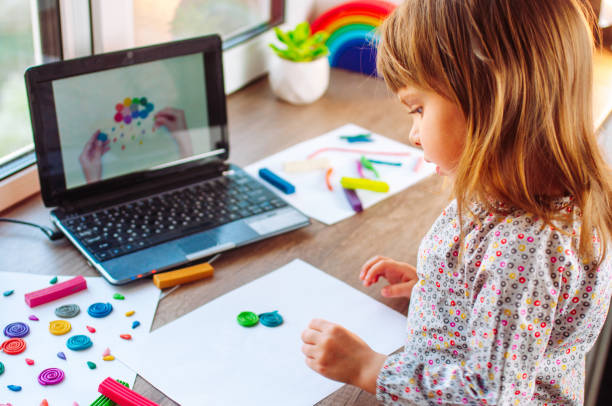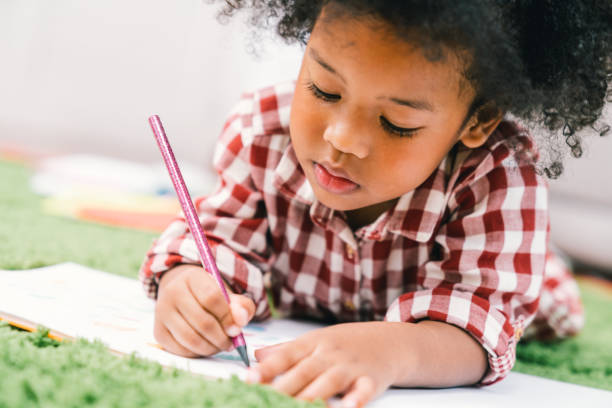Introduction:
Welcome to our blog dedicated to supporting primary caregivers of children. In this blog series, we will explore the topic of homework hassles and provide valuable strategies for establishing a homework routine for young children, particularly those starting daycare or preschool. As a primary caregiver, you play a crucial role in shaping your child's early educational experiences and helping them develop positive study habits.

At this stage of your child's development, introducing a homework routine may seem premature or challenging. However, it's important to understand that homework for toddlers is not about academic pressure or rigorous assignments. Instead, it focuses on fostering a sense of responsibility, independence, and curiosity while nurturing a lifelong love of learning.
Understanding the Importance of Homework for Toddlers
In this section, we delve into the reasons why introducing homework at a young age is beneficial and discuss the importance of establishing a homework routine for toddlers. We emphasize the following points:
-
Why introduce homework at a young age? We explore the cognitive and developmental benefits of early exposure to structured learning activities. Homework at this age is not about academic pressure but rather about fostering a sense of responsibility, independence, and curiosity.
-
Benefits of establishing a homework routine: We discuss how a consistent homework routine helps children develop time management skills, enhances their ability to follow instructions, and boosts their confidence and self-esteem.
-
Setting realistic expectations for toddlers: We emphasize the need to adjust expectations based on the developmental stage of toddlers. Understanding their limited attention span and ability to focus for short periods helps set reasonable goals and avoid unnecessary frustrations.
Creating a Homework-Friendly Environment

2.1 Designing a Distraction-Free Study Space
-
Organizing a dedicated homework area: We provide tips on how to create a designated homework area that is free from distractions, clutter, and noise. This may involve setting up a small desk or table with age-appropriate learning materials nearby.
-
Minimizing distractions in the surroundings: We suggest strategies such as turning off the television, minimizing background noise, and keeping toys and gadgets out of sight during homework time.
-
Selecting appropriate learning materials: We discuss the importance of age-appropriate materials that engage and stimulate your child's learning. This may include colorful books, puzzles, educational toys, and writing tools suited for their fine motor skills.
2.2 Establishing a Consistent Homework Time
-
Determining the best time for homework: We encourage caregivers to identify a time of day when their child is well-rested, attentive, and receptive to learning. Some children may be more alert in the morning, while others may be better focused in the afternoon or evening.
-
Consistency and routine: We stress the significance of establishing a regular homework routine that becomes a predictable part of the child's daily schedule. This consistency helps create a sense of structure and expectation.
-
Incorporating flexibility for young children: While consistency is important, we acknowledge the need for flexibility in accommodating a toddler's changing moods and energy levels. Adjustments can be made to the homework routine while maintaining a general framework.
Engaging and Motivating Your Child
3.1 Making Homework Fun
-
Incorporating playful learning activities: We provide creative ideas for making homework enjoyable, such as turning counting exercises into games, using arts and crafts for letter recognition, or incorporating movement and music into learning tasks.
-
Utilizing educational games and toys: We suggest age-appropriate educational games, apps, and interactive toys that can reinforce learning concepts and make homework engaging for toddlers.
-
Infusing creativity and imagination into assignments: We explore how caregivers can incorporate storytelling, pretend play, and imaginative scenarios to make homework more exciting and encourage active participation from their child.
3.2 Building a Positive Attitude towards Learning
-
Encouraging a growth mindset: We discuss the importance of nurturing a growth mindset in toddlers, where mistakes are viewed as opportunities for learning and improvement. This mindset fosters resilience and a willingness to take on challenges.
-
Praising effort and progress: We emphasize the value of acknowledging and praising the child's effort, progress, and persistence during homework tasks. Celebrating small achievements helps build confidence and motivation.
-
Fostering a love of learning: We provide suggestions on how caregivers can foster a genuine love for learning by incorporating activities that align with their child's interests and passions. This enthusiasm for learning creates a positive association with homework and academic pursuits.
Effective Homework Strategies

4.1 Breaking Down Tasks into Manageable Chunks
-
Chunking assignments for easier comprehension: We explore how caregivers can break down homework tasks into smaller, manageable steps that match the child's attention span and cognitive abilities. This approach reduces overwhelm and facilitates better understanding.
-
Providing step-by-step instructions: We guide caregivers on how to offer clear and concise instructions that help the child navigate each task independently. Visual cues or demonstrations can enhance comprehension.
-
Celebrating small achievements along the way: We discuss the importance of recognizing and celebrating the completion of each task, reinforcing a sense of accomplishment and progress.
4.2 Using Visual Aids and Timers
-
Visual schedules and charts: We explain how visual aids, such as daily or weekly schedules, can help toddlers understand and anticipate their homework routine. These visual cues offer a sense of structure and assist with transitions between activities.
-
Setting timers for focused work periods: We suggest using timers or countdowns to establish designated work periods and breaks. This strategy helps toddlers manage their time effectively and promotes sustained focus during homework tasks.
-
Using countdowns to manage transitions: We discuss the use of countdowns or warnings before transitioning from one activity to another. This prepares the child mentally for the shift, reducing resistance or meltdowns.
Collaborating with Teachers and Preschool Staff
5.1 Communicating with Educators
-
Establishing open lines of communication: We highlight the importance of building a positive relationship with teachers or preschool staff to foster collaboration. Regular communication allows for sharing concerns, progress updates, and seeking guidance.
-
Sharing concerns and challenges: We encourage caregivers to communicate any homework-related concerns, difficulties, or observations they have noticed in their child. This open dialogue helps educators better understand the child's needs and tailor support accordingly.
-
Seeking guidance and feedback: We advise caregivers to reach out to teachers or preschool staff for advice and feedback on establishing effective homework routines. They can provide valuable insights based on their experience and expertise.
5.2 Aligning Homework with Preschool Curriculum
-
Understanding the educational objectives: We stress the importance of familiarizing oneself with the preschool curriculum and learning goals. This knowledge helps caregivers align homework assignments with what is being taught in the classroom, reinforcing learning at home.
-
Reinforcing classroom learning at home: We provide tips on how to incorporate activities or exercises that complement the topics covered in preschool. This integration strengthens the child's understanding and retention of concepts.
-
Customizing assignments to match your child's interests: We encourage caregivers to tailor homework assignments to their child's interests and preferences whenever possible. This personalization enhances engagement and motivation during homework sessions.
Conclusion:
Establishing a homework routine for children aged 2 to 3 years is an essential step in their early education journey. By following the strategies discussed in this blog series, you can create a positive and engaging learning environment that fosters your child's curiosity, independence, and love for learning. Homework at this age is not meant to be burdensome or overwhelming. Instead, it serves as a gentle introduction to structured learning and helps children develop important skills such as concentration, problem-solving, and perseverance. By starting early, you are instilling in your child a sense of responsibility and discipline that will benefit them throughout their academic years.

Remember that every child is unique, and it's crucial to adapt the strategies to your child's individual needs and learning style. Be patient and flexible, allowing for breaks and adjustments as needed. The goal is to create a positive association with homework, making it an enjoyable and rewarding experience for both you and your child. Collaboration with your child's teachers and preschool staff is vital in establishing a consistent homework routine. Open lines of communication ensure that you are aligned with their educational objectives and can reinforce classroom learning at home. Share any concerns or challenges you may face, and seek guidance and feedback from the experts who work closely with your child.
Throughout this journey, remember to focus on the process rather than solely on the end result. Encourage a growth mindset, praising your child's effort and progress. Celebrate the small achievements along the way, fostering a sense of pride and motivation. By making homework fun and engaging, you can ignite your child's natural curiosity and thirst for knowledge. Incorporate playful learning activities, educational games, and creative assignments to make the experience enjoyable. Infusing imagination into the tasks will not only enhance their academic skills but also nurture their creativity and critical thinking abilities.
As a primary caregiver, your role in establishing a homework routine is crucial. Your guidance, support, and enthusiasm will shape your child's perception of learning. By creating a dedicated study space, setting consistent homework times, and breaking tasks into manageable chunks, you are providing structure and establishing a routine that will benefit your child's overall development. In conclusion, starting a homework routine for children aged 2 to 3 years is an investment in their future success. Through a combination of a positive learning environment, engaging strategies, collaboration with educators, and a focus on the process, you are setting the stage for a lifelong love of learning. Embrace this exciting journey with your child, and watch as they blossom academically, socially, and emotionally. Stay tuned for more valuable insights and tips in our upcoming blog posts!

